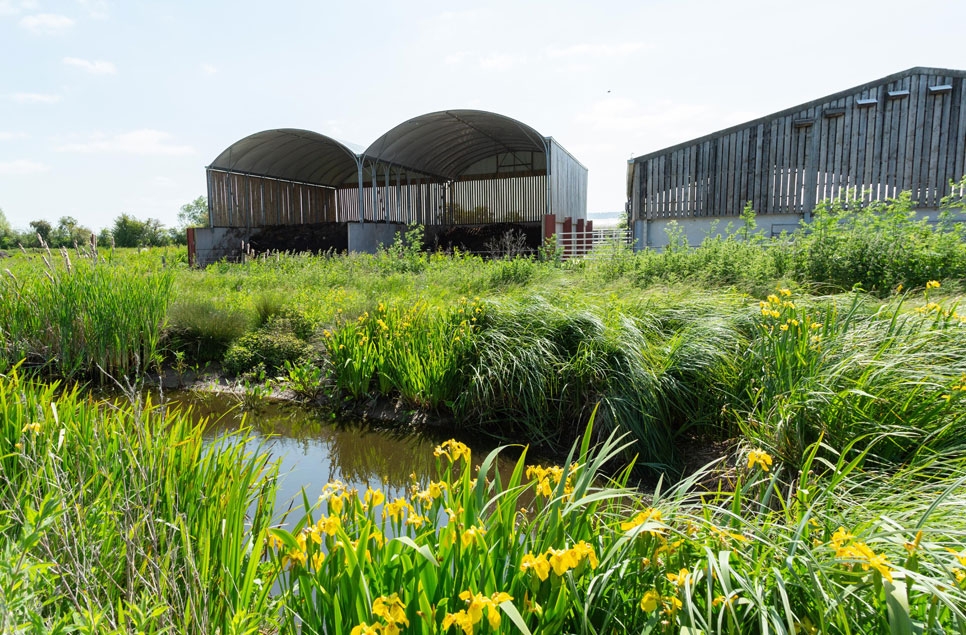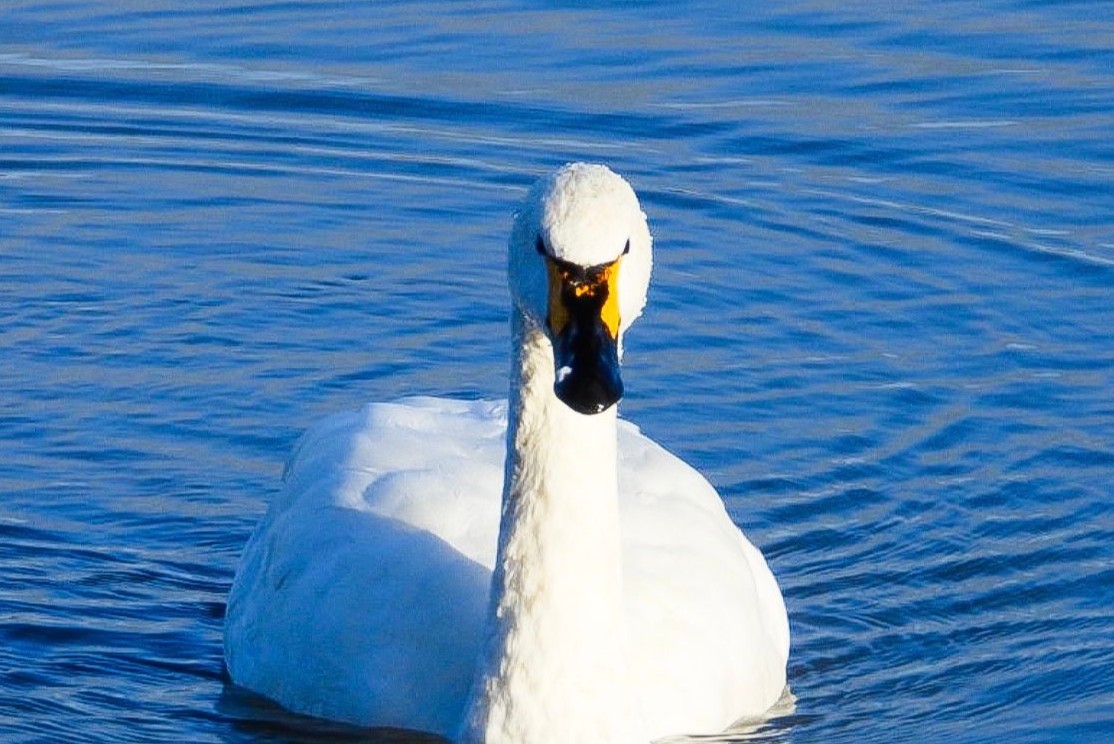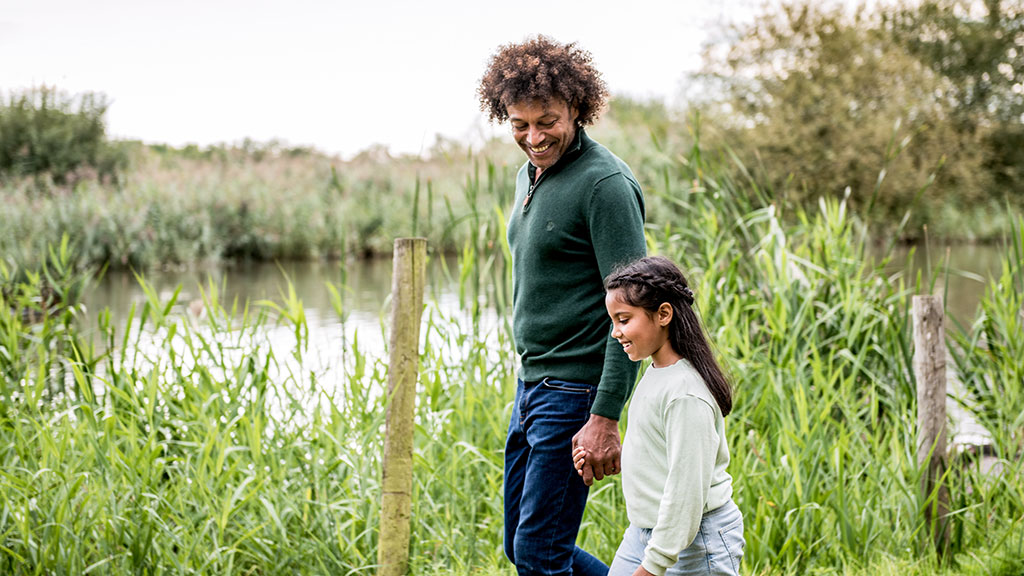Could specially engineered wetlands help clean up the UK's polluted waterways?
WWT calls for national pilot scheme to be established in the UK by 2025.

At a time when sewage and other pollutants are regularly pumped into our rivers, a new report is calling for the cleanup of our waterways to be assisted through the creation of specialised wetlands at sewage plants, on farms, in housing developments and by roads, alongside stronger regulation and financial penalties for polluters.
Evidence shows that ‘treatment wetlands’ have the potential to remove up to 90% of nitrogen pollution from agriculture and sewage. They could also remove up to 60% of heavy metals from road pollution and trap up to 90% of sediment run-off which can block out light from waterbodies1.
Treatment wetlands are specially engineered habitats that absorb and break down the pollutants in water in a low maintenance and cost-effective way, so that it comes out clean once it has passed through them.
With only 14% of England’s rivers in good health2 and around £21.7 million lost annually due to sickness caused by polluted water3, our report is asking for government and business to act now and invest in this pioneering natural solution.
We're calling for a national pilot scheme to be established in the UK by 2025, to make treatment wetlands the default option for meeting new nutrient neutrality targets and to establish and develop an effective market in nutrient trading and offsetting by creating a nutrient offsetting code.
The widespread use of treatment wetlands could be key to the UK meeting its water quality and biodiversity targets, including helping reduce sewage discharges into rivers and decreasing agriculture pollution – the biggest polluter of our waterways – while bringing back wildlife.
Dan Roberts, Project Manager (Nature-based solutions), from WWT said:
“There is a huge opportunity for a broad range of sectors to improve poor water quality by investing in wildlife-rich treatment wetlands. Ongoing headlines about sewage being dumped in our precious waterways could become yesterday’s news if water companies adopted treatment wetlands and community SuDS schemes as part of a much-needed investment programme.
“There are already government funds available* and scope to reduce share dividends to allow the water industry to invest in this highly effective, low carbon, biodiverse solution to the water pollution crisis, bringing benefits to communities and nature”
Treatment wetlands can help reduce the number and impact of highly harmful sewage discharges by being:
- built near houses to treat wastewater at source, removing the need for households to be connected to the main sewer, significantly relieving pressure on our crumbling sewage system.
- constructed between sewage overflow pipes and rivers to clean the dirty discharged water before it enters watercourses.
- installed downstream of discharge points to limit the damage if sewage is released directly into a river.
These ‘super’ wetlands can also be built on farms to capture and break down fertilizers, pesticides and sediment which run off fields and buildings and enter our waterways when it rains. They can reduce pollution from roads and landfill sites by being integrated into existing street drainage systems and constructed near dump sites.
As well as enhancing water quality, which itself helps life thrive, treatment wetlands also create vital wildlife habitats and corridors where none existed before, improving biodiversity and helping the UK reach its species abundance target.
Katy Muggeridge, Brand Director from the Glengoyne Distillery, owned by Ian Macleod Distillers in Scotland commented:
“At our distillery we have seen the huge benefits that having treatment wetlands in the right place can reap. Back in 2012, the first year of our partnership with WWT, we introduced twelve specially created wetlands which filter and clean the wastewater after distillation through reedbeds on site before it flows into the local burn and then on to Loch Lomond. This has meant we no longer need to transport wastewater to an offsite industrial treatment plant, allowing us to cut overall waste by 25% and cut journeys by 21 per week.
“The treatment wetlands have also attracted wonderful new wildlife to our distillery, including 14,500 plants, birds, insects and amphibians and improved biodiversity on site as part of our wider distillery sustainability plans. This foresight has helped Glengoyne achieve a Green Tourism Gold medal and I’d encourage colleagues from across our sector to seriously consider including treatment wetlands in their sustainability plans.”
Wetlands Can!
Wetlands are amazing habitats which, as well as cleaning water and restoring biodiversity, help store carbon, prevent flooding, and make us feel better. We're calling for 100,000 hectares of healthy wetlands to be restored in the UK to help with the climate, nature and water pollution crises.
Find out more* The UK’s Water Restoration Fund and the Government’s provision of £1.6 billion for extra infrastructure investment
References
1. https://www.gov.uk/government/publications/guidance-manual-for-constructed-wetlands
2. https://www.gov.uk/government/publications/state-of-the-water-environment-indicator-b3-supporting-evidence/state-of-the-water-environment-indicator-b3-supporting-evidence
3. https://www.sas.org.uk/waterquality2022/human-health/time-is-money/#top



